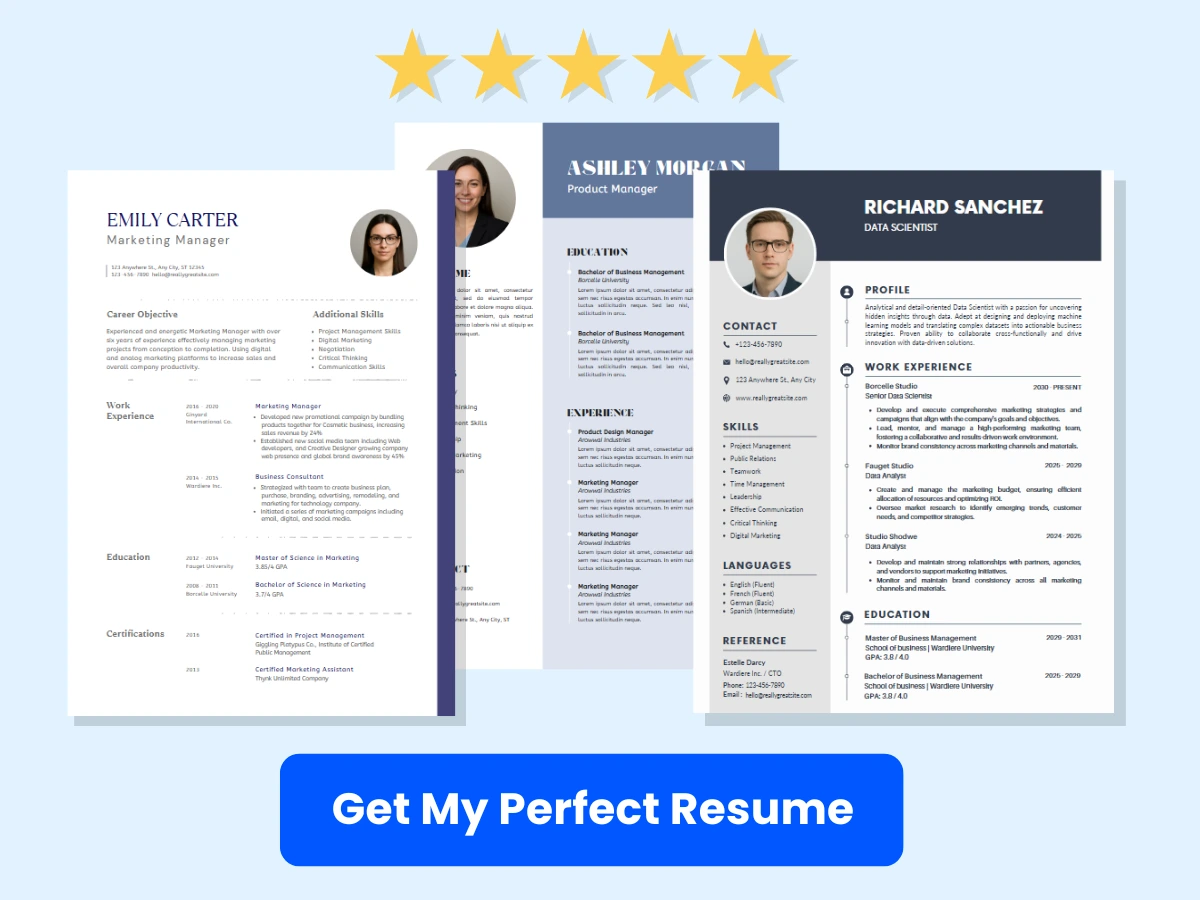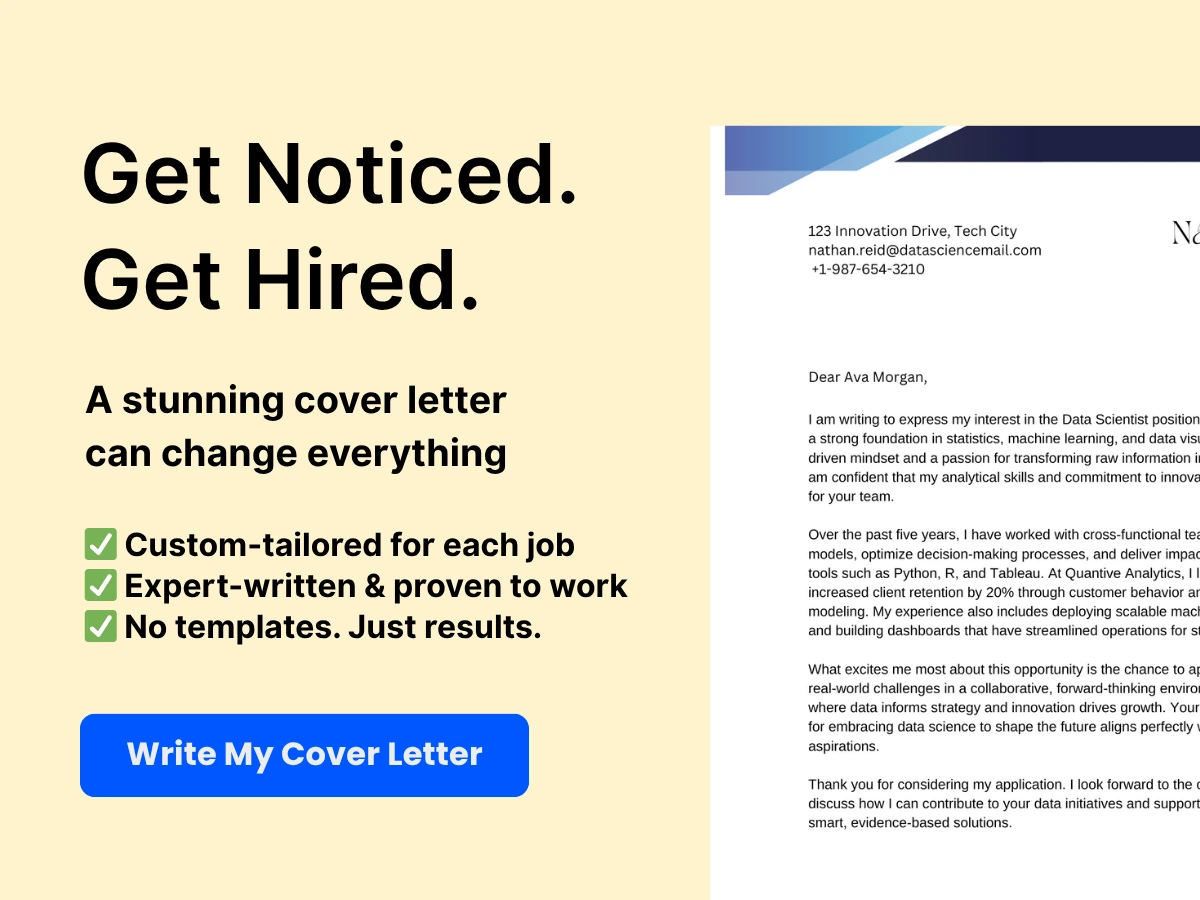In today’s competitive job market, crafting an impressive resume is essential for job seekers to showcase their skills and highlight their achievements. This is particularly true for those in the fashion industry where creativity and design skills are highly valued. A fashion stylist resume not only needs to demonstrate your experience and skills but must also capture your creativity and flair.
Overview of Fashion Stylist Resume Writing
Fashion stylist resume writing involves highlighting your creative and artistic flair as well as your experience in the fashion industry. Whether you are a freelance fashion stylist or work for a fashion brand, your resume should showcase your skills in styling, visual merchandising, fashion trends, garment construction, and fabric selection. Additionally, it should relay your experience with fashion shows, photoshoots, and other fashion-related projects.
Importance of an Impressive Fashion Stylist Resume
Having an impressive fashion stylist resume can make all the difference in securing your dream job. A strong resume will highlight your achievements, showcase your experience, and demonstrate your creativity. It is essential for aspiring fashion stylists to demonstrate their unique artistic vision and their ability to work under tight deadlines and pressure. A poorly written resume can lead to missed opportunities, while an impressive resume can lead to job interviews and career advancement.
In this article, we will explore the importance of an impressive fashion stylist resume and provide examples and a complete guide on how to craft a successful fashion stylist resume. Whether you are a seasoned fashion stylist or a beginner, this article will help you create a standout resume that will impress potential employers and launch your fashion career.
Fashion Stylist Resume Basics
If you’re pursuing a career in fashion styling, it’s crucial to have a well-crafted resume that showcases your skills and experience. In order to make a good first impression on potential employers, it’s important to understand the purpose of a fashion stylist resume and the key components that should be included.


A. Understanding the Purpose of a Fashion Stylist Resume
A fashion stylist resume serves as your marketing tool to showcase your skills, experience, and personality to potential employers. It’s important to craft a compelling and professional document that highlights your accomplishments and experience in the industry. A great fashion stylist resume can help you stand out from other candidates and land your dream job in the industry.
B. Key Components of a Fashion Stylist Resume
When crafting your fashion stylist resume, it’s important to include the following key components:
1. Contact Information
This section should include your full name, phone number, email address, and professional website or social media handles.
2. Professional Summary/Objective
In this section, you should provide a brief overview of your skills, experience, and career goals. You can include a professional summary if you have several years of experience, or an objective if you’re just starting out.
3. Work Experience
Your work experience should be presented in a reverse chronological order and include the name of the company, your job title, the dates of employment, and your main responsibilities and achievements. You should tailor this section to reflect your experience in fashion styling and any relevant roles you’ve held in the industry.
4. Education
Include any formal education or training you’ve completed relevant to fashion styling. This can include degrees, diplomas, certifications, or workshops that you’ve participated in.


5. Skills
In this section, you should include any skills or areas of expertise that are relevant to fashion styling. This can include software skills, styling skills, design skills, or any other skills that are particularly relevant to the industry.
6. Awards and Achievements
If you’ve been recognized for your work in fashion styling, include any awards or achievements you’ve received in this section. This can help demonstrate your dedication and skill in the industry.
Your fashion stylist resume should be clear, concise, and professional. Make sure to also proofread your document carefully to ensure there are no mistakes or errors. With a well-crafted fashion stylist resume, you can showcase your skills and experience and make a great impression on potential employers.
Fashion Stylist Resume Format
When it comes to crafting your fashion stylist resume, choosing the right format is critical. The format you choose will affect the way employers perceive your experience and qualifications, so it’s important to select the one that best showcases your strengths.
Here are three popular resume formats to consider:


A. Chronological Resume Format
The chronological resume format is the most commonly used – and familiar – format. This style lists your work experience in reverse chronological order, starting with your most recent position and working backwards.
If you have a strong work history in the fashion industry, or if you’ve been with the same company for an extended period of time, the chronological format may be the way to go. It allows you to highlight your career progression and show your longevity with previous employers.
B. Functional Resume Format
The functional format puts the focus on your skills and accomplishments rather than your work history. This format groups your skills and achievements under different headings, with a summary of your work experience listed at the bottom.
This format is useful if you’re changing careers or if you have gaps in your work history. It’s also a good choice if you have a diverse range of skills and accomplishments that you want to highlight.
C. Combination Resume Format
As the name suggests, the combination format combines elements of both the chronological and functional formats. It lists your work history in reverse chronological order, but also includes a section where you can highlight your most relevant skills and accomplishments.
This format is useful if you have a strong work history but also want to showcase specific skills and achievements. It’s also a good choice if you’re applying for a job that requires a specific set of skills and you want to make sure those are front and center on your resume.
D. Selecting the Right Format for Your Fashion Stylist Resume
So how do you choose the right format for your fashion stylist resume? Here are a few key things to consider:


-
Think about your work history and how it relates to the job you’re applying for. Do you have a strong work history in fashion? Or do you have a diverse range of skills and experiences that you want to highlight?
-
Consider the job posting and make sure your resume aligns with the job requirements. If the job posting emphasizes certain skills or experience, make sure those are highlighted on your resume.
-
Think about your overall career goals. Are you looking for a job in a specific niche of the fashion industry? Or are you open to different types of opportunities? Your career goals can help guide the format you choose.
In the end, the most important thing is to choose a format that showcases your strengths and makes it easy for employers to see why you’re the right fit for the job. By putting in the time to craft a strong resume, you’ll be well on your way to landing your dream job as a fashion stylist.
Writing a Fashion Stylist Resume
One of the most important parts of creating a successful Fashion Stylist resume is to ensure it stands out. Potential employers will often have a countless number of resumes to review, so your resume must be captivating and effective in order to grab their attention. Here are some tips for creating a captivating and effective Fashion Stylist resume:
A. Captivating and Effective Professional Summary/Objective
Your professional summary or objective is one of the first things that potential employers will read on your resume, so it is essential to make sure that it is captivating and effective. A good professional summary should be brief, to-the-point, and highlight your unique skills and experience. A strong objective statement should show your desired career path.


B. Crafting Eye-catching Work Experience
When crafting the work experience section of your Fashion Stylist resume, it is important to highlight not only your related job titles but also showcase your accomplishments.
1. Highlighting Fashion-Related Accomplishments
Highlighting your fashion-related accomplishments, such as styling photoshoots or creating signature looks, is a great way to show your experience in the field. This will catch the attention of potential employers and show them that you have the necessary skills to succeed in the industry.
2. Quantifying Achievements
Quantifying your achievements, such as increasing sales or growing social media following, will make it easier for potential employers to understand the impact you made in your previous positions. This will also showcase your results-oriented approach.
3. Demonstrating Relevant Soft Skills
Don’t forget to demonstrate your relevant soft skills, like effective communication or strong attention to detail, alongside highlighting your technical experience. This will show potential employers that you are not just skilled in your trade, but possess the necessary interpersonal skills to excel in a fashion stylist role.
C. Attention-grabbing Skills Section
Including an attention-grabbing skills section on your resume will allow you to showcase both your technical and transferable skills, as well as your language proficiency.
1. Technical Skills
Technical skills such as familiarity with fashion design software or knowledge of industry-specific terminology, are highly valued in the fashion industry. Make sure to showcase your technical expertise here.


2. Transferable Skills
Transferable skills, such as project management or event coordination can show potential employers how you can utilize your previous experience in a fashion stylist role.
3. Language Proficiency
Language proficiency should also be highlighted in this section, especially if bilingual or multilingual, as this can be a highly marketable skill in the fashion industry.
D. Including Relevant Education and Professional Development
It is important to include your relevant education, such as a degree in fashion design or merchandising, and any professional development or certifications, such as attending a specific design or styling course. This will showcase your commitment to your career and your dedication to staying on top of the latest trends and techniques.
Examples of Fashion Stylist Resumes
If you’re looking for inspiration for your fashion stylist resume, check out these examples that we’ve curated just for you. From a sample fashion stylist resume to one for entry-level applicants to one for experienced professionals, we’ve got you covered.
A. Sample Fashion Stylist Resume
Here’s an example of a fashion stylist resume that showcases the candidate’s skills and experience:


Name: Jane Doe
Contact Information:
- Email: janedoe.
Common Mistakes to Avoid in Fashion Stylist Resume Writing
As a fashion stylist, your resume is your ticket to landing a coveted job in the fashion industry. However, even the most experienced fashion stylist can make mistakes when it comes to crafting their resume. In order to avoid costly errors that can derail your job search, consider the following common mistakes to avoid when writing your fashion stylist resume:
A. Grammatical and Spelling Errors
While this may seem obvious, you would be surprised at how many resumes end up in the discard pile because of simple spelling and grammatical errors. A typo or incorrect use of punctuation can give a potential employer the impression that you lack attention to detail or are not serious about the job. Be sure to proofread your resume carefully and have a trusted friend or colleague review it as well.
B. Including Unnecessary Information
Your resume should be concise and to the point. Including information that is irrelevant to the position or the industry can be a waste of valuable space and may give the impression that you are not focused on the job at hand. Stick to the essential information that is required for the position and highlight your relevant skills and experience.
C. Lying about Skills and Experiences
It can be tempting to exaggerate your skills and experience in order to appear more qualified for a position. However, lying on your resume can have serious consequences, including loss of the job and damage to your reputation. Be honest about your qualifications and focus on highlighting your strengths and accomplishments.
D. Failure to Tailor Resumes to Specific Job Postings
One of the biggest mistakes that fashion stylists make when crafting their resumes is failing to tailor them to specific job postings. Each job posting is unique and requires a different set of skills and experiences. By tailoring your resume to specific postings and highlighting the skills and experiences that are most relevant to the job, you increase your chances of being selected for an interview.
By avoiding these common mistakes, fashion stylists can increase their chances of landing the job of their dreams. Remember to proofread your resume carefully, include only relevant information, be honest about your qualifications, and tailor your resume to specific job postings. With these tips in mind, you can create a winning resume that showcases your skills and experiences in the best possible light.
Styling Your Fashion Stylist Resume
When it comes to creating a fashion stylist resume, it’s not just about the content – the design and format are just as important. In order to stand out from other applicants, it’s essential to style your resume in a visually appealing and professional manner. Here are some tips for styling your fashion stylist resume:
A. Choosing the Right Fonts and Colors
The font and color choices you make can have a big impact on the overall look and feel of your resume. It’s important to choose fonts that are easy to read and professional-looking. Avoid using overly decorative or cursive fonts, as they can be difficult to read and may not be compatible with certain devices.
When it comes to colors, stick to a simple and consistent color scheme. Use colors sparingly to draw attention to important sections or headings, but don’t go overboard. Stick to neutral colors such as black, gray, and white, and use highlights of bold colors like red or blue to add a pop of interest.
B. Using Bullet Points and White Space
When it comes to formatting your resume, less is often more. Use bullet points to break up long paragraphs of text and create a more visually appealing format. Be consistent with your bullet point style, and make sure each bullet point is concise and to the point.
White space is also important in creating a clean and professional-looking resume. Avoid cramming too much information onto one page, and use blank space to separate sections and make your resume easy to scan.
C. Incorporating Keywords and Action Verbs
In addition to the visual design of your resume, it’s important to incorporate relevant keywords and action verbs to make your skills and experience stand out. Use keywords that are relevant to the fashion industry and the specific job you’re applying for. Similarly, use action verbs to describe your experience and achievements in a clear and concise way.
D. Adding Contact Information and Social Media Profiles
Finally, make sure to include your contact information and social media profiles on your resume. This makes it easy for potential employers to get in touch with you and learn more about you as a professional. Make sure to include your full name, phone number, email address, and any relevant social media profiles such as LinkedIn or Instagram.
Styling your fashion stylist resume is just as important as the content you include. Use these tips to create a visually appealing and professional-looking resume that stands out from the rest.
Optimizing Your Fashion Stylist Resume for ATS
As a fashion stylist looking for a job, it’s essential to have an impressive and optimized resume to make a favorable first impression with potential employers. However, to ensure that your resume passes the initial screening process, you need to understand the role of ATS (Applicant Tracking System) and tailor your document accordingly.
A. Understanding the Function of ATS
ATS is a software program designed to screen resumes and cover letters based on specific criteria outlined by the hiring company. These criteria are determined by predefined keywords, skills, education, and experience to match job requirements. When employers receive a massive pool of applications, ATS filters out unqualified candidates and presents the qualified ones to hiring managers for review. That’s why it’s essential to optimize your resume for ATS to increase your chances of getting selected.
B. Tailoring Your Resume for ATS
The first step in tailoring your resume for ATS is to identify the keywords and phrases used in the job posting. Use these keywords in your resume to increase your relevance and compatibility with the ATS. Make sure to highlight relevant experience, education, and skills that align with the job description. However, avoid keyword stuffing and ensure that your sentences flow naturally and without contrivance.
Keep your formatting simple and easy to read to ensure that ATS can analyze your document correctly. Avoid including graphics, images, tables, and infographics, as they may gum up the ATS system.
C. Using Keywords Appropriately
Using relevant keywords in your resume can make a massive difference in getting past the initial screening. However, don’t skimp on using the relevant job titles, skills, industry terms, certifications, degrees, or other necessary keywords. A critical point to remember is that ATS is programmed to value exact keyword matches, so make sure they are present in your resume.
D. Avoiding Complex Formatting
Also, avoid using complex or unique formatting techniques, such as tables, columns, or unconventional fonts. Always save your resume as a Microsoft Word document, as it’s the most compatible format for ATS. The software can read most of the file formats, including PDF, but Word offers the best chance of rendering information correctly. ATS reads information in the sequence it appears in the document, so make sure to maintain a consistent format to ensure proper sequencing.
Optimizing your fashion stylist resume for ATS is crucial, and it all starts with understanding its function. You should also tailor your resume for ATS, use relevant keywords appropriately, and avoid complex formatting. By doing so, you can increase your chances of making it past the initial screening process and landing your dream job.
Submitting Your Fashion Stylist Resume
Congratulations on crafting a stunning fashion stylist resume! Now it’s time to get it into the hands of potential employers. Here are three ways to submit your resume:
A. Cover Letters and Thank You Letters
Cover letters and thank you letters are the unsung heroes of the job application process. Not only do they show your appreciation for the opportunity, but they also give you the chance to speak personally to the hiring manager.
When writing your cover letter, make sure to highlight how your skills and experience align with the specific job requirements. This is also a great place to showcase your creativity and passion for fashion. And don’t forget the thank you letter after your interview. It’s a great way to follow up and make a lasting impression with the hiring manager.
B. Submitting Online via Email or Career Sites
In today’s digital world, many employers prefer to receive resumes and job applications online. This allows them to easily filter and track applicants. When submitting your resume online, make sure to follow the specific instructions given by the employer. Some may require you to upload a PDF file, while others may prefer a plain text version pasted into an email.
If you’re submitting your resume through a career website or job board, make sure to check for any additional instructions or requirements. And don’t forget to optimize your resume for applicant tracking systems (ATS). Use keywords from the job description and make sure your formatting is ATS-friendly.
C. Printing and Physical Submission
While online submissions are becoming more common, some employers still prefer physical copies of resumes. If you’re submitting a physical copy of your resume, make sure to print it on high-quality paper and use a professional folder or envelope.
When submitting your resume in-person, make sure to dress professionally and bring extra copies in case of multiple interviewers. And don’t forget to follow up with a thank you note after the interview.
Follow the specific instructions given by the employer and make sure to highlight your skills and passion for fashion. Best of luck with your job search!
Related Articles
- Automotive Mechanic Job Description: Skills & Opportunities
- QA Manager Job Description: A Complete Guide for 2023
- Business Project Manager: Job Description and Requirements
- New Employee Announcement: How to Inform Your Team in 2023
- Common Spelling Mistakes on Resumes: How to Avoid Them








